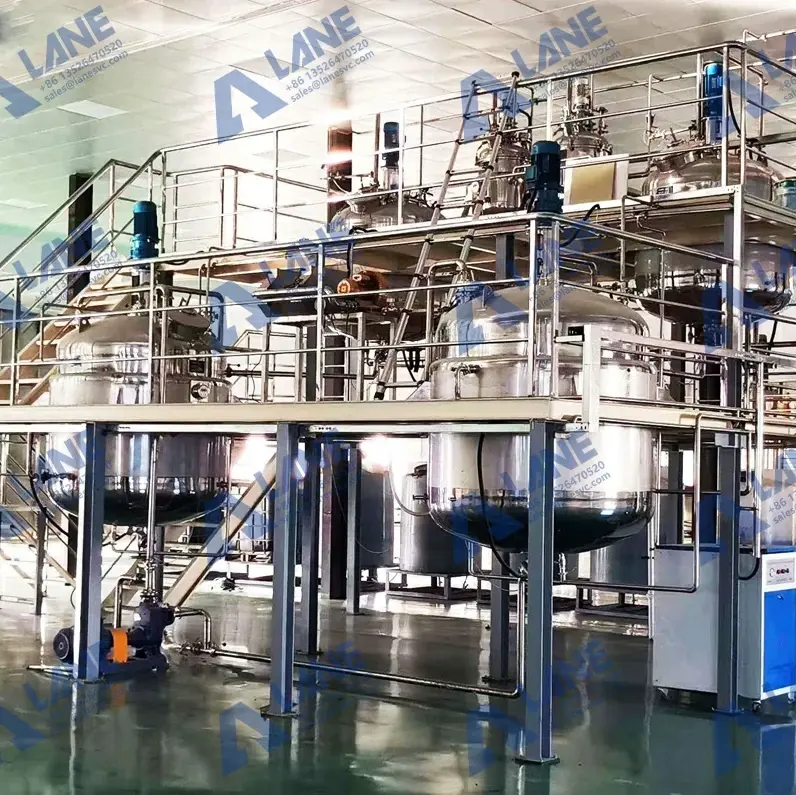Liquid Fertilizer Manufacturing Equipment for Modern Agriculture
- Nancy Ju
- Sep 15
- 4 min read
Updated: Sep 30
Liquid fertilizers are increasingly preferred in modern agriculture due to their fast nutrient availability, compatibility with fertigation systems, and efficiency in crop management. Unlike traditional solid fertilizers, liquid fertilizers can be applied directly to soil or leaves, ensuring rapid uptake and precise nutrient delivery.
The development of liquid fertilizer manufacturing equipment has made it possible for farms, cooperatives, and industries to produce nutrient-rich fertilizers on-site. By using raw materials such as animal manure, crop residues, molasses, or industrial by-products, these systems transform waste into valuable liquid fertilizers. A complete setup ensures controlled processing, quality stability, and large-scale production to meet growing agricultural demands.

Why Invest in Liquid Fertilizer Manufacturing Equipment?
Nutrient Efficiency
Liquid fertilizers provide fast-acting nutrients directly to plant roots or leaves.
Versatility
Compatible with drip irrigation, foliar spraying, and hydroponic systems.
Sustainability
Transforms waste into valuable fertilizer, reducing pollution and supporting circular agriculture.
Cost Reduction
Farmers can lower input costs by producing fertilizers locally.
Scalability
From small cooperatives to industrial plants, systems can be tailored to production needs.
Production Workflow of Liquid Fertilizer Manufacturing Equipment
The process of producing liquid fertilizer involves several stages, each requiring specialized equipment:
1. Raw Material Collection
Manure, crop residues, and by-products like molasses or soybean meal are gathered.
2. Dewatering
Materials with high water content pass through an inclined dewatering machine to adjust moisture and separate solids.
3. Crushing and Mixing
Solid materials are reduced in size using a crushing machine, then blended with water and microbial inoculants in a stainless steel mixing tank.
4. Fermentation
The slurry is transferred into fermentation tanks, where microbes break down organic matter, releasing nutrients into liquid form.
5. Filtration
The liquid passes through a dual filter to remove particles, ensuring smooth fertilizer suitable for irrigation systems.
6. Nutrient Adjustment
In a stainless steel mixing tank, pH regulators, stabilizers, or trace minerals are added to improve fertilizer balance and storage stability.
7. Quality Testing
Samples are tested for nutrient composition, microbial activity, and safety.
8. Packaging and Storage
The final product is stored in sealed tanks or packaged using an automatic liquid filling machine, ready for farm use or commercial sale.

Advantages of Liquid Fertilizer Manufacturing Equipment
The benefits of adopting liquid fertilizer manufacturing equipment can be illustrated through a comparison:
Category | Liquid Fertilizer Manufacturing Equipment | Conventional Fertilizer Purchase |
Nutrient Control | Custom formulations based on crop stage. | Fixed nutrient ratios, less flexibility. |
Environmental Impact | Recycles organic waste into fertilizer. | Relies on resource-intensive industrial processes. |
Cost | Reduces dependency on imported fertilizers. | Higher long-term expenses. |
Application | Compatible with fertigation and hydroponics. | Limited adaptability for modern systems. |
Market Value | Supports organic certification and eco-friendly branding. | Restricted in sustainable markets. |
Case Studies of Liquid Fertilizer Manufacturing Equipment
Case 1: Maize Farms in Argentina
In Argentina, maize producers established a mid-sized liquid fertilizer manufacturing equipment facility to recycle cattle manure and crop residues. The liquid fertilizers were used for fertigation, increasing yields by 12% while reducing chemical fertilizer use.
Case 2: Vegetable Greenhouses in Turkey
A cooperative in Turkey built a compact production line using molasses and poultry manure. The fertilizers were applied to tomatoes and cucumbers through drip irrigation systems. Farmers reported improved crop quality, lower input costs, and higher market competitiveness.

Applications in Agriculture
Cereals and Grains: Rapid nitrogen supply supports rice, maize, and wheat growth.
Vegetables: Enhances quality and yield of tomatoes, cucumbers, and peppers.
Fruit Orchards: Improves flowering, fruit size, and resilience.
Greenhouses: Compatible with fertigation systems for precise application.
Hydroponics: Provides clean, particle-free fertilizers for nutrient solutions.
Challenges and Solutions
Challenge: High Initial Investment
Solution: Cooperative ownership and government subsidies can reduce costs.
Challenge: Technical Knowledge
Solution: Training and automated monitoring simplify operation.
Challenge: Quality Consistency
Solution: Regular laboratory testing and IoT integration.
Challenge: Maintenance
Solution: Use durable stainless steel equipment and schedule preventive servicing.
Environmental Impact
Using liquid fertilizer manufacturing equipment directly contributes to environmental protection:
Reduces open-field waste burning and nutrient runoff.
Cuts greenhouse gas emissions from untreated manure.
Promotes soil biodiversity by feeding beneficial microbes.
Aligns with global goals for regenerative and circular farming.
Market Potential
The global market for liquid fertilizers is expanding rapidly due to precision farming and sustainability demands. Countries in Asia, Latin America, and Africa with abundant agricultural residues are particularly well-positioned to adopt liquid fertilizer manufacturing equipment.
Government incentives, rising fertilizer prices, and consumer demand for eco-friendly products are creating strong drivers for adoption worldwide.
Future Outlook
The future of liquid fertilizer manufacturing equipment will involve more automation, IoT-based quality monitoring, and AI-driven nutrient management. Systems will become increasingly modular, allowing farmers to scale production as needed.
Renewable energy integration, such as solar-powered mixers and pumps, will further reduce costs and carbon footprints. As sustainable food production becomes a global priority, liquid fertilizer manufacturing equipment will play a central role in ensuring productivity and environmental responsibility.
The adoption of liquid fertilizer manufacturing equipment offers farmers a powerful tool for sustainable agriculture. By transforming waste into valuable fertilizer, farms improve soil fertility, reduce costs, and meet growing market demands for eco-friendly production.
From maize fields in Argentina to vegetable greenhouses in Turkey, real-world examples prove the versatility and benefits of these systems. As agriculture embraces new technologies and sustainability, liquid fertilizer manufacturing equipment will remain essential for future food security and environmental health.
Email: sales@lanesvc.com
Contact number: +86 13526470520
Whatsapp: +86 13526470520






Comments